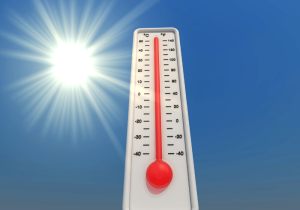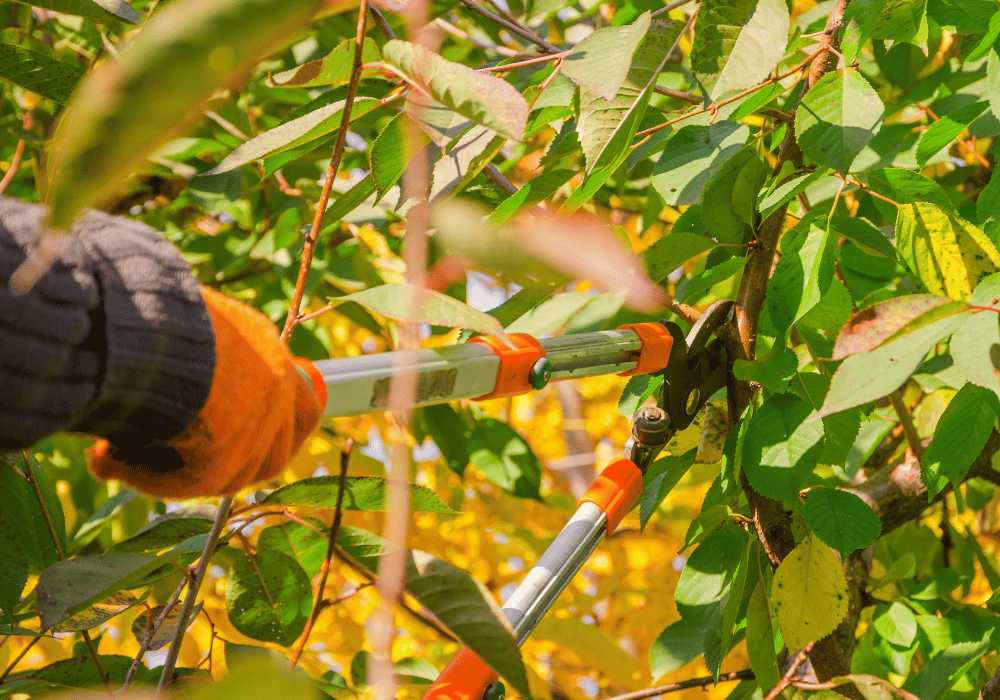During the warm and often harsh summer months, the trees in your yard face unique challenges. Whether it’s intense heat, dry conditions, or pesky pests, summer can take a toll on their health and vitality. Proper tree care during this season is essential not only for their well-being but also for maintaining the beauty and value they bring to your property. This guide will walk you through critical steps to ensure your trees thrive throughout the hottest months of the year.
Watering Strategies
 Watering trees is one of the most important aspects of summer care, but doing it incorrectly can cause more harm than good. Trees need consistent hydration to combat the drying effects of summer heat. Deep watering is key. Instead of frequent, shallow watering, provide a long, slow soak that reaches the tree’s deep root system. Aim for watering once or twice a week, depending on the climate and soil conditions, ensuring that the soil is moist but not waterlogged.
Watering trees is one of the most important aspects of summer care, but doing it incorrectly can cause more harm than good. Trees need consistent hydration to combat the drying effects of summer heat. Deep watering is key. Instead of frequent, shallow watering, provide a long, slow soak that reaches the tree’s deep root system. Aim for watering once or twice a week, depending on the climate and soil conditions, ensuring that the soil is moist but not waterlogged.
Timing is equally crucial. The best time to water your trees is early in the morning or in the evening when temperatures are cooler. This minimizes water evaporation and allows the tree to absorb more moisture. Avoid watering in the middle of the day when the sun is at its peak, as most of the water will evaporate before reaching the roots. Remember, younger trees typically require more frequent watering than mature ones due to their less established root systems.
It’s also important to learn how to spot signs of overwatering or underwatering. Leaves that are yellowing, wilting excessively, or falling prematurely could indicate either issue. Regularly check the soil around the base of the tree. If the soil feels dry two to three inches below the surface, it’s time to water. If it feels soggy or water pools around the tree’s base, water less frequently.
Mulching Benefits
Mulching is a simple yet effective way to protect your trees during the summer. By applying mulch around the base of your trees, you can help retain soil moisture, regulate temperature, and suppress weed growth. This is especially important during summer when water evaporates quickly from the soil and weeds compete with your trees for nutrients and water.
Choose organic mulching materials like shredded bark, wood chips, or leaf litter. These options not only insulate and shade the soil but will also decompose over time, enriching the soil with nutrients. Aim to spread the mulch in a 2 to 4-inch layer around the base of your tree, extending out to the canopy’s drip line. This will cover the area where most of the tree’s feeder roots are located.
However, avoid piling mulch directly against the tree trunk. This can lead to excess moisture, rot, and attract pests or diseases. Leave a gap of 2 to 3 inches around the trunk to ensure proper airflow and prevent not only fungal growth but also pest infestations. Regularly check your mulch layer and refresh it as needed to maintain its effectiveness throughout the summer.
Pest and Disease Control
Summer is prime time for many pests and tree diseases to flourish, making proactive pest and disease management essential. Aphids, spider mites, caterpillars, and borers are just some of the common summer pests that can damage your trees. Early detection is crucial, so inspect your trees regularly for signs like holes in leaves, webbing, discolouration, or visible insects.
For prevention, keep your trees healthy with proper watering, mulching, and fertilization. A healthy tree is better equipped to resist pests and diseases. If you notice an infestation, organic treatment options, such as neem oil sprays or insecticidal soaps, are effective and eco-friendly ways to manage pests. Pruning affected branches can also limit the spread of pests within the tree.
Beyond pests, be on the lookout for summer diseases like powdery mildew or fire blight, which thrive in warm, humid conditions. Remove infected branches and leaves promptly, and avoid overhead watering as excess moisture on foliage can exacerbate fungal issues. If disease persists, consult an arborist to determine whether fungicides or other treatments are necessary.
Pruning Guidelines
While major pruning is typically reserved for the dormant seasons, selective summer pruning is beneficial for maintaining tree health and appearance. Focus on removing dead, damaged, or diseased branches to redirect the tree’s energy towards healthy growth. Thinning out crowded branches can also improve airflow and light penetration, reducing the likelihood of disease and promoting a healthier canopy.
When pruning in summer, be mindful of the tree species. Some trees, such as maples and birches, bleed sap if pruned in early spring, making summer a safer time for a light trim. Similarly, flowering trees benefit from summer pruning once their blooms have faded, as this prevents stress during their flowering periods.
Always use sharp, clean tools to make precise cuts, reducing the risk of infection. Avoid over-pruning as this can stress your tree and expose it to too much direct sunlight, potentially leading to sun scald. If you’re unsure about how much to prune, consult a professional arborist to avoid causing unintentional harm.
Sun Protection
 The intense summer sun can pose a risk to certain trees, especially those that are newly planted or have thin bark. Sun scald and heat stress can damage the bark and leaves, potentially reducing the tree’s overall health. To protect your trees, consider using tree wraps or providing temporary shading for younger or vulnerable trees. Burlap or shade cloth can be draped to shield trees from excessive sunlight while still allowing airflow.
The intense summer sun can pose a risk to certain trees, especially those that are newly planted or have thin bark. Sun scald and heat stress can damage the bark and leaves, potentially reducing the tree’s overall health. To protect your trees, consider using tree wraps or providing temporary shading for younger or vulnerable trees. Burlap or shade cloth can be draped to shield trees from excessive sunlight while still allowing airflow.
Watch for signs of sun damage, such as cracked bark, leaf browning, or scorched patches. If sun damage has occurred, remove affected leaves or bark only as necessary and focus on helping the tree recover with consistent watering and nutrients. Building up the tree’s resilience by following best practices for watering, mulching, and fertilization is the best defence against future sun stress.
Soil Health
Healthy soil is the foundation of any thriving tree. Summer can deplete soil nutrients, especially if your tree is growing vigorously or competing with nearby plants. Testing your soil is a great place to start. A soil test can reveal deficiencies or imbalances in nutrients, helping you select the right fertilizer.
Choose a slow-release fertilizer to ensure a steady supply of nutrients over time. Products rich in nitrogen, phosphorus, and potassium are generally ideal for summer. Additionally, soil amendments like compost or well-rotted manure can add organic matter to your soil, improving its structure and ability to retain water.
Keep in mind that over-fertilization can do more harm than good, so always follow the product’s recommended application rates. For large or established trees, focus on fertilizing the root zone and avoid applying fertilizer directly near the base of the trunk. Pair these fertilization efforts with adequate watering and mulch for optimal soil health.
Caring for trees in the summer doesn’t have to be a daunting task. By following these tips for watering, mulching, pest control, pruning, sun protection, and soil health, you can help your trees endure the season’s challenges and ensure they remain healthy and vibrant year-round. Proactive maintenance not only protects your trees but also enhances the beauty and value of your landscape. If you’re unsure about any step in the tree maintenance process or need expert assistance, Brockley Tree is here to help. Contact us today for advice or to schedule professional tree services so your trees can stay strong and stunning, no matter the season.

